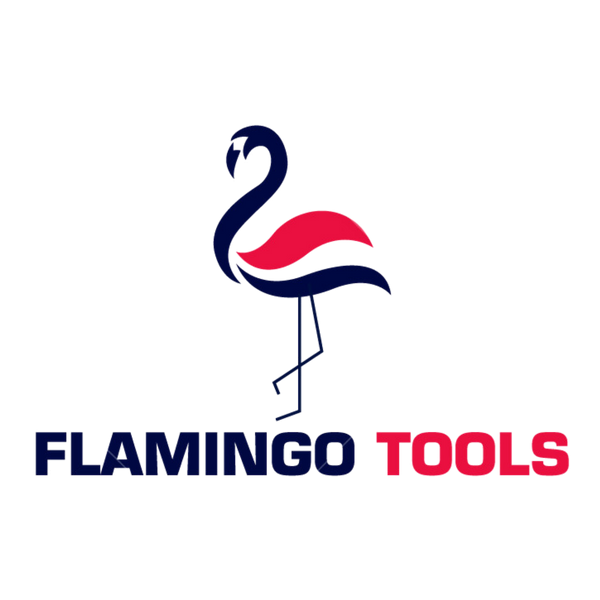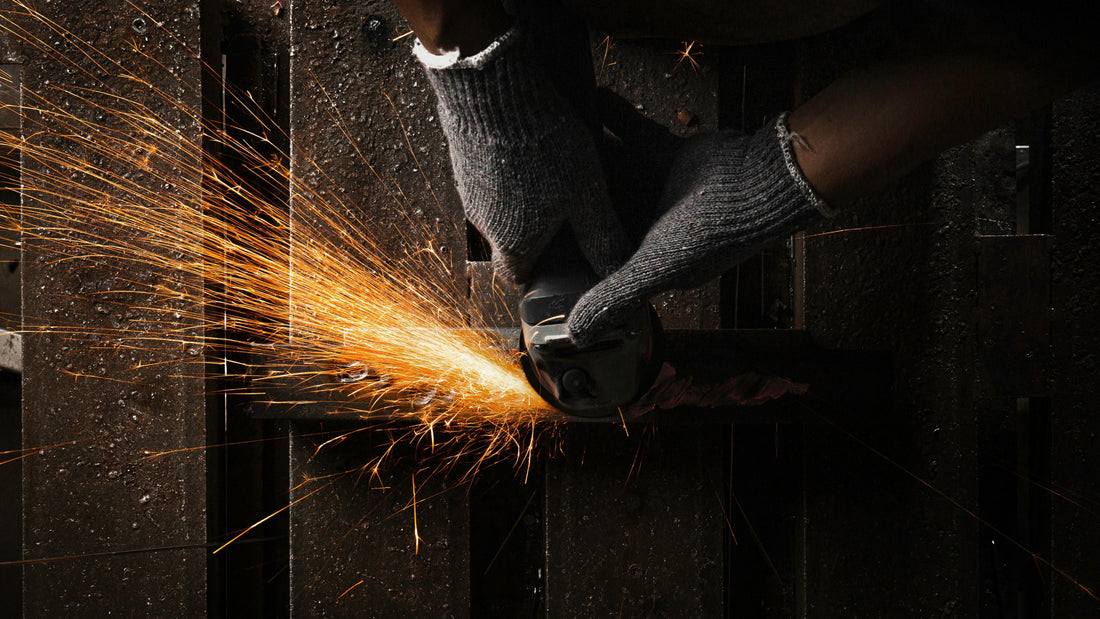
Cut-off wheels are incredibly useful tools for quickly cutting through different materials, but when used incorrectly, they can be extremely dangerous. Safe use of a cut-off wheel includes wearing the proper safety equipment, inspecting the wheels before use, and ensuring that the cut-off wheels are being used as intended. Keep these safety "do's and don'ts" in mind before operating any tool with a portable cut-off wheel.
Cutting Wheel Safety: What to Always Do

- **Always wear appropriate safety equipment.** Personal protective equipment is extremely important. This includes wearing safety glasses, along with goggles and/or a face shield. We also recommend wearing other protective equipment as needed, such as masks and gloves.
- **Always do a safety check of each cutting wheel before use.** Check for cracks or any damage. This will prevent pieces from flying around the shop or a broken disc from shattering during use.
- **Before use, check the maximum operating speed marked on the wheel and compare it with the speed of the machine.**
- **Check that your disc is the correct size for your angle grinder or other power tool you plan to use.** Using one that is too small or too large can be dangerous.
- **Make sure the cutting wheel is designed for the material you are cutting.** This also prevents contamination and wasted materials and wheels. This step can save you quite a bit in overall costs.
- **Make sure portable cut-off wheels are mounted on grinders that have the proper guards and flanges.**
- **Position the wheel guard so that it is properly positioned between the operator and the cutting wheel.**
- **Always do a one minute test run of your wheel in a protected area before cutting.** This will allow you to ensure the wheel will be safe to use before cutting your work piece.
- **Always check that the workpiece is secure at both ends before cutting.** The slightest movement or slipping of the workpiece can be a serious hazard.
- **Make sure the portable cut-off wheel is only used for cutting metal.** Never use it for a task for which it is not intended, such as grinding or deburring.
- **Always maintain a 90 degree angle between the cutting wheel and the workpiece.**
- **Always stop cutting if you hear or feel any unusual vibration, sound, or if anything doesn't feel right.** Inspect the wheel before continuing.
- **Do your best to avoid impacts to the cutting wheel.** If impact occurs, stop cutting and inspect the wheel for damage; replace your wheel if any damage is observed.
- **Use a moderate, consistent feed rate toward the wheel.**
- **Keep all body parts and clothing away from the cutting wheel, especially while it is moving.** This also includes your protective equipment.
- **Always be aware of your surroundings and the spark stream to protect yourself and bystanders.**
- **Make sure your work area is free of flammable materials.**
- **Always replace wheel guards that show any signs of damage.**
- **Handle and store your portable cutting wheels carefully and safely.**
- **Check your wheel for all warnings and follow them.**
**Always check the safety data sheets for your wheel and the material you will be cutting before using it.**
Cutting Wheel Safety: What Not to Do

- **Never use a cutting wheel of a different size than the one your machine accepts.**
- **Never remove or alter the wheel guards on your machine.**
- **Never use a wheel that is damaged, cracked, or has been dropped.**
- **Do not use axle bushings other than those provided by the wheel manufacturer.**
- **Do not use your wheels to cut any material for which they are not specifically designed.**
- **Never use your cutting wheel to cut wood.**
- **Do not use the cutting wheel side or operate it in a manner not intended.**
- **Do not use excessive or sudden pressure while operating the cutting wheel.**
- **Never allow the wheel to twist, turn or bend while cutting.**
- **Do not use the cutting wheel if you notice it is bent or twisted, even in the slightest degree.**
- **Never use the machine or cutting wheels without having reviewed all safety materials on both the machine and the specific cutting wheel you are using.**
- **Never rest your grinder with the wheel in contact with the surface.**
- **Never leave flammable materials in your work area, especially within the spark stream.**
- **Do not use the wheel before letting it run for 60 seconds.**
- **Remember that your safety and the safety of those around you should be paramount.** Do not take shortcuts or use these tools and abrasives outside of their intended use.
When to Replace a Cutting Wheel
There are several instances where you should definitely replace a cutting wheel:
- **Always replace a cutting wheel if it shows any signs of damage.** This includes, but is not limited to, visible cracks and chips or any signs of bending or twisting of the wheel.
- **Cutting wheels should be replaced when they reach their expiration date.** This can be found printed on the metal center of the disc. Time, UV light, temperature changes, humidity and other storage conditions cause the bonding agents that hold the disc together to break down.
- **If you have any doubts about the safety of your drive, you should probably replace it.** Don't take chances because you think it "maybe" is safe to use.
Respecting both your tools and the abrasive materials that accompany them is essential to prevent unnecessary accidents or even deaths.

At **flamingoherramientas.com**, we do our best to ensure the safe arrival of ready-to-use products. However, damage during shipping can occur. It is important that you also remember to inspect the wheel once again before using it. Damage can occur accidentally during operation, transportation, or even during storage.

